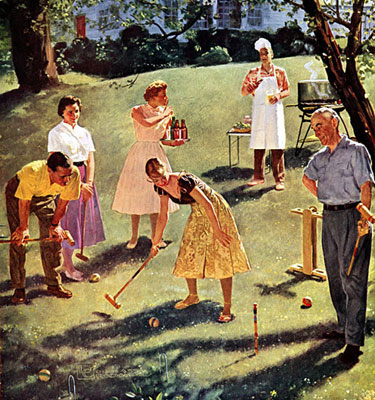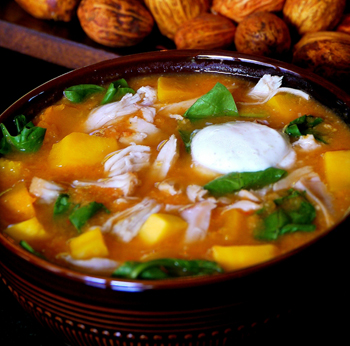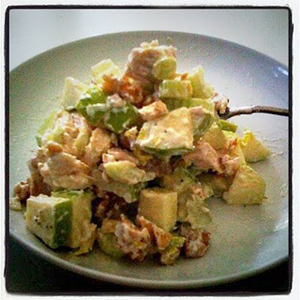 As I was making my Shepherd's pie for our book club supper last night, I started to nibble thoughtfully on a celery stick and realized with quite an epiphany what a maligned and ignored vegetable the poor celery is. All due credit to Hugh Fearnley-Whittingstall who said, famously, "Celery is a bit like a gym membership." The crunch is the thing, isn't it? It's the minxy little crunch that gets you every time.
As I was making my Shepherd's pie for our book club supper last night, I started to nibble thoughtfully on a celery stick and realized with quite an epiphany what a maligned and ignored vegetable the poor celery is. All due credit to Hugh Fearnley-Whittingstall who said, famously, "Celery is a bit like a gym membership." The crunch is the thing, isn't it? It's the minxy little crunch that gets you every time.
Which led (as it does, stay with me here) to my driving home this morning down the CA 170 (my very favorite freeway) absolutely ravenous after schooling three horses and wondering what could prevent me from stopping at a fast food drive-thru. Cut to twenty minutes later and a plate adorned with a skinny version of a Waldorf salad sits in front of me, proud as can be. Easy and inadvertently calorie-conscious (as I couldn't find any mayo in the bloody fridge). Here's how you make this excruciatingly simple, scrumptious, crunchy lunch:

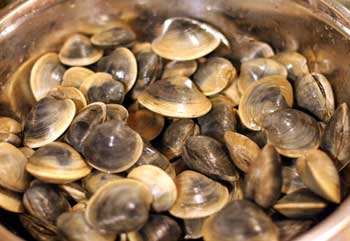 What a perfect time to declare it to be New England clam chowder week because the temperature here in Maine has been zero degrees at night and the wind has been a howling! Recipes for chowder are pretty personal around here. Some old salts would never use rendered bacon fat to sauté their onions in, they'd stop listening to you, roll their eyes and turn up their noses. Salt pork is how the old timers started chowder, period. Quahogs, not likely, either.
What a perfect time to declare it to be New England clam chowder week because the temperature here in Maine has been zero degrees at night and the wind has been a howling! Recipes for chowder are pretty personal around here. Some old salts would never use rendered bacon fat to sauté their onions in, they'd stop listening to you, roll their eyes and turn up their noses. Salt pork is how the old timers started chowder, period. Quahogs, not likely, either.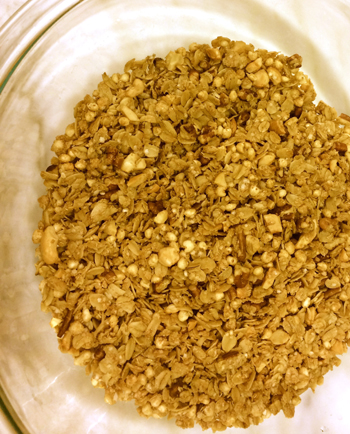 So far I have kept my New Year’s resolution to eat healthy. (Okay, so maybe except for the wine and a little chocolate.) This commitment includes a granola breakfast. (Later in the day, the menu gets very green.)
So far I have kept my New Year’s resolution to eat healthy. (Okay, so maybe except for the wine and a little chocolate.) This commitment includes a granola breakfast. (Later in the day, the menu gets very green.)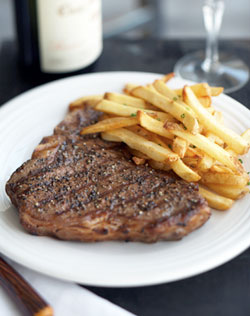 Growing up my mother and grandmother fed us picadillo, a dish of ground beef, potatoes, tomatos, onions and spices. It was the perfect meal–delicious and satisfying–and always enjoyed with fresh flour tortillas on the side. It’s a dish I still crave to this day, and like most Latin cuisine it has its regional differences.
Growing up my mother and grandmother fed us picadillo, a dish of ground beef, potatoes, tomatos, onions and spices. It was the perfect meal–delicious and satisfying–and always enjoyed with fresh flour tortillas on the side. It’s a dish I still crave to this day, and like most Latin cuisine it has its regional differences.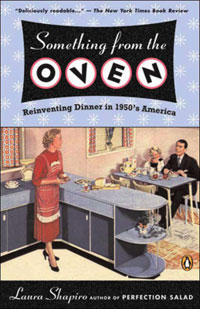 Recently I was at a library book sale and as usual I scanned for hidden treasure among the cookbooks. Browsing cookbooks is nothing short of a history lesson. Here's what I found, as men came back from fighting overseas and Americans travelled abroad for pleasure, their hunger for exotic recipes increased and so did the number of international cookbooks.
Recently I was at a library book sale and as usual I scanned for hidden treasure among the cookbooks. Browsing cookbooks is nothing short of a history lesson. Here's what I found, as men came back from fighting overseas and Americans travelled abroad for pleasure, their hunger for exotic recipes increased and so did the number of international cookbooks.